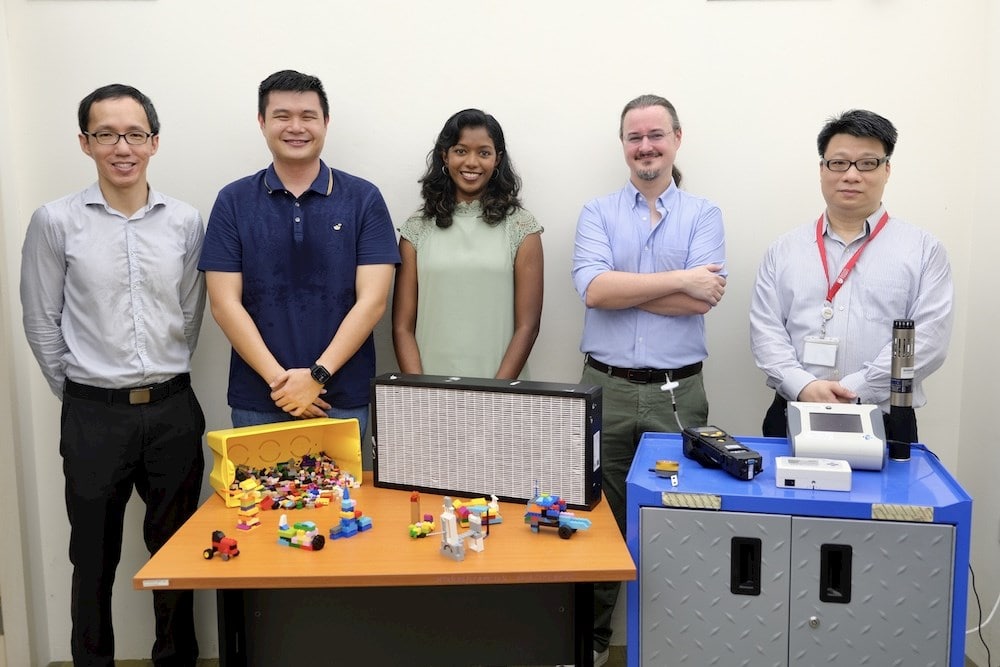Consider, for a moment, the air you breathe as an influential factor shaping your creative thoughts. A study suggests that the volatile organic gas contaminant content(VOC) in our environment might play a crucial role in our ability to think creatively. In essence, the air around us could be a silent catalyst for innovative thinking.
In the fast-paced world we live in, creativity is often viewed as the driving force behind innovation. A recent experimental study conducted by the National Technical University, Singapore (NTU Singapore), has unveiled an unexpected factor that could influence our creative abilities – indoor air quality.
The study aimed to objectively measure creative thinking by engaging participants in creative building activities using the Serious Brick Play method. The results were enlightening, as they demonstrated a noteworthy link between clean air and heightened creativity. Specifically, exposure to common indoor air pollutants had a tangible impact on creative performance. Clean air was found to facilitate imaginative thinking, while poor air quality seemed to hinder the creative process.
Identifying the culprits
From this study, the role of indoor air quality parameters (PM2.5, TVOC, and CO2) in maintaining a creative environment (involving lateral thinking ability) was evaluated.
Participants were given a challenge and were required to build a solution using LEGO® bricks within a given timeframe. They were then asked to describe their creation. The creations and descriptions were assessed based on originality, fluency, and build quality.

Image: (from left) Members of the research team include NTU Asst Prof Ng Bing Feng, NTU Graduate Lau Wee Siang, NTU PhD graduate Dr Shmitha Arikrishnan, former NTU senior research fellow Dr Adam Charles Robert, and NTU Assoc Prof Wan Man Pun.
The products used in the research were:
• Particulate matter filter – combination of G4 (Camfil 30/30 Panel Filters, ISO ePM10 50%) and F8 (Camfil EcoPleat G, ISO ePM1 70%)
VOC removal is achieved by using high quality activated carbon with a very high surface area and relevant porosity.
• Molecular filter – Camfil TVOC removal filter

1. Use the right filter
Things to consider before investing in air filtration solutions for commercial buildings:
1. Review your existing air handling system
2. Check to ensure that there is no bypass in the duct or leakages in the building
3. Identify the type of filters that can be installed in your existing AHU
4. Select the filters based on the ISO 16890 and ISO 10121-3 classification
5. Estimate filter change-out duration according to the acceptable final pressure drop, as per EN 13053 standard
6. Evaluate the total air filtration solutions based on the ‘Total Cost of Ownership’ that includes energy cost, filter change-out duration, labor cost, and CO2 emissions
2. Consider air purification
In non-air-conditioned places or where air filters in AHU can’t be upgraded due to limited space, we recommend using air cleaners with at least 2 stages of filters. e.g. Molecular filters according to ISO 10121-3 and HEPA14 (MPPS) according to EN1822 standard.
The following points to be considered before buying air cleaners:
1. Clean air delivery rate (CADR) for removal of cigarette smoke (diameter 0.1 – 1.0 µm)
2. Ozone emission (valid for electronic technology air cleaners), it's advisable to consider mechanical filtration product
3. Noise level
4. Energy-efficient motor like EC motor
5. Minimum 2 stages filters; molecular filter to remove VOCs/ Ozone and HEPA14 (@MPPS) to remove ultrafine particles
Breathing innovation into everyday life
The ability to generate fresh, captivating ideas is essential in various aspects of our lives. This study prompts us to consider the impact of clean air on our creative abilities, a factor that is often overlooked. By prioritizing clean air in our surroundings, we can potentially unlock untapped creative potential, ensuring that innovation becomes a natural part of our everyday experiences.
To achieve this, it is important to identify everyday objects that silently contribute to indoor air pollution and take necessary measures to minimize their impact.
1 Source: Energy Research Institute at Nanyang Technological University of Singapore, " Experimental study on the impact of indoor air quality on creativity by Serious Brick Play method", 19 September 2023, https://www.nature.com/articles/s41598-023-42355-z